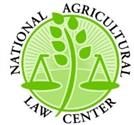The State of Arkansas made history last month when it took steps to enforce its new law restricting foreign ownership of land in the state. Arkansas ordered Northrup King Seed Co., a subsidiary of Syngenta held by China-owned company ChemChina, to give up 160 acres of Arkansas farmland it owned. The State also assessed a $280,000 fine against Syngenta for failing to disclose the land ownership. The actions are the result of a new foreign ownership law enacted by the Arkansas legislature earlier this year.
Joining Arkansas and ten other states, Ohio also passed a law restricting foreign ownership of land earlier in 2023. Ohio’s new “Save our Farmland and Protect our National Security Act” quietly became effective last month. The law limits who can own agricultural land in the state and requires persons or entities who cannot own Ohio farmland to forfeit title to the property, which the State will then sell. The purpose of the law, according to the legislature, is “to recognize that Ohio has substantial and compelling interests in protecting its agricultural production.”
Who is restricted from owning agricultural land in Ohio
The law is not an absolute restriction on foreign ownership of land. Instead, the law prohibits agricultural land ownership by any “person” listed on a registry compiled by Ohio’s Secretary of State. A “person” can include an individual, firm, company, trust, business or commercial entity, organization, joint venture, non-profit, or non-U.S. government. The prohibition applies not just to the person listed on the registry, but also to any agent, trustee, or fiduciary of the person.
The Ohio Secretary of State must compile the “registry” by identifying and including any person that constitutes a threat to the agricultural production of the state. To develop the registry, the Secretary of State must consult several federal sources, including the list of foreign adversaries, terrorist exclusion list, list of countries that have provided support for acts of international terrorism, and persons designated by two presidential Executive Orders. In accordance with the law, Ohio’s Secretary of State has compiled the registry and published it online at https://www.ohiosos.gov/publicintegrity/save-our-farmland/.
Exceptions to the ownership restrictions
The restriction does not apply to any agricultural land acquired before the act’s effective date of October 3, 2023. Nor does it apply to a transfer of land to a person on the registry through inheritance, gift, collection of a debt, foreclosure, or enforcement of a lien. However, in these instances, the person must divest itself of the title and any interest in the land within two years of receiving the property. And while holding the land until divestiture, the person cannot use it for any purpose other than agriculture or lease it to any person on the registry.
Enforcement of the law
Enforcement involves both the Secretary of State and the Ohio Attorney General. If the Secretary of State finds that a person listed on the registry has acquired title or an interest in land in violation of the law, the Secretary of State must report the violation to the Attorney General. Others can report land ownership by a person on the registry via the Secretary of State’s web page for the registry, https://www.ohiosos.gov/publicintegrity/save-our-farmland/.
Upon learning of the violation, the Attorney General must initiate a legal action in the county where the land is located. If the court agrees that the ownership violates the law, it shall file an order allowing the state to take ownership of the land and ordering the land to be sold at public auction, following required legal procedures. Proceeds from the sale are to be applied first to any court costs and expenses, then to the registered person. That amount is limited, however, to the actual cost paid by the registered person for the land. If any sale proceeds remain, the funds are to be paid to the general fund of each county where the land is located, proportionate to the acreage in the county.
Learn more on our next Farm Office Live
Join us on November 17 at 10 a.m. for our next version of Farm Office Live, a farm management and ag law update webinar by OSU’s Farm Office team. We’ll discuss Ohio’s new foreign ownership law and talk with Micah Brown, staff attorney with the National Agricultural Law Center, about foreign ownership restrictions in the U.S. and what they mean for agriculture. The Farm Office team will also cover Using Charitable Remainder Trusts, Ohio’s Role in Organic Grain Production, Farm Business Analysis Update, and Farmer Mental Health Concerns and Resources. Register for Farm Office Live at https://farmoffice.osu.edu/farmofficelive.
Read the primary provisions of Ohio’s Save Our Farmland and Protect Our National Security Act in Ohio Revised Code Section 5301.256. The Ohio Legislature enacted the law in House Bill 33, the biennial budget bill.




